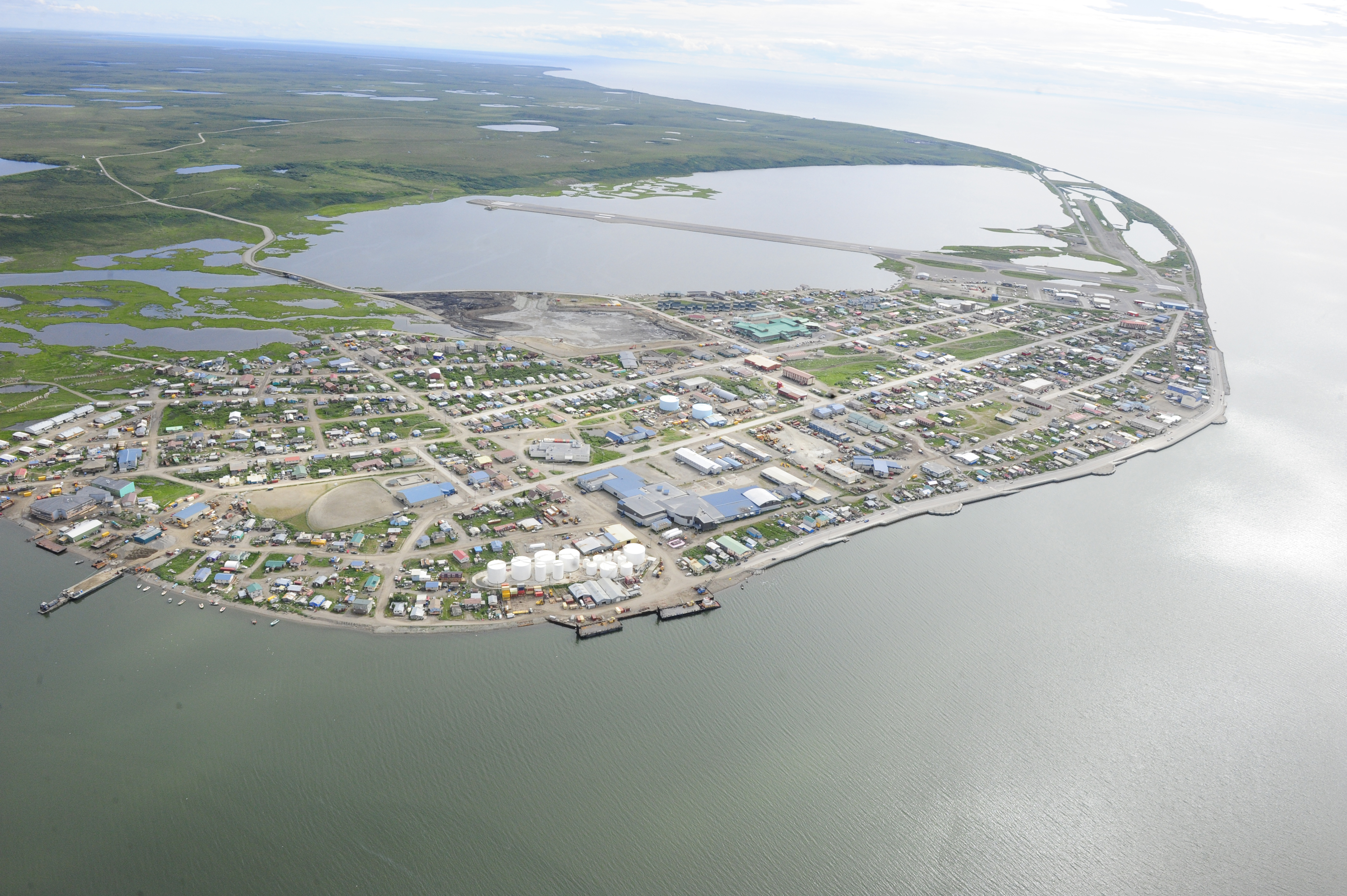U.S. Coast Guard’s Arctic season underway with station opened at Kotzebue
The Coast Guard has chosen the Chukchi Sea community to host its Arctic summer operations for the fourth consecutive year.

The U.S. Coast Guard has set up its summer shop in Arctic Alaska, establishing a seasonal base of operations at Kotzebue, a hub community on the Chukchi Sea coast.
Two Jayhawk helicopters and a crew from Air Station Kodiak officially opened the forward operating station on July 1, the Coast Guard said. Crews from Kodiak will work in Kotzebue on rotating schedules, the Coast Guard said.
The summer operations will provide search-and-rescue services in what is the busiest time of the year in those far-north waters, along with maritime enforcement, support of research vessels, assistance to scientists surveying and studying Arctic marine mammals and public outreach.
“As America’s interest in the Arctic continues to grow, the Coast Guard is committed to fulfilling our missions and supporting remote communities in this strategically valuable area,” Coast Guard Commander Adam Merrill, operations officer at Air Station Kodiak, said in a statement. “Air Station Kodiak aircrews will provide search and rescue, community relations presence, aids-to-navigation support and interagency cooperation to monitor marine wildlife stocks throughout the deployment season.”

It is the fourth consecutive year that the Coast Guard has used Kotzebue as its base of summer operations. The city offers the convenience of an Alaska Army National Guard hangar that the Coast Guard can use, and it is strategically located near the Bering Strait, the narrow and sometimes well-trafficked passage between the Bering and Chukchi seas and between Alaska and Russia.
The territory of responsibility extends far beyond Kotzebue and the Bering Strait region, however. The Arctic forward operating station serves an area stretching from the Southwest Alaska hub community of Bethel to the tip of northwestern Alaska, at the Beaufort Sea border between Alaska and Canada, the Coast Guard said.
The Coast Guard has conducted summer operations in the Arctic for about a decade. The program got a boost in 2012, when it set up operations in Utqiagvik, then known as Barrow, to provide a safety net for the first season of offshore Arctic drilling by Royal Dutch Shell. That drilling program was ultimately unsuccessful and abandoned, but the Coast Guard continued coming to the Arctic, establishing stations in various spots over the years.
There have been several notable Arctic search-and-rescue missions, including the 2017 evacuation of an ailing man from a Chinese research ship and the rescue of six lost hunters from St. Lawrence Island, also that year.
Perhaps less spotlighted but also important to the Coast Guard’s Arctic season is preventing emergencies. This season’s work includes projects of the Marine Safety Task Force, a combination of Coast Guard teams focused on Bering Strait area safety. The task force mission is not about search and rescue but “more about inspecting fuel storage facilities, inspecting vessels, inspecting gold barges in Nome,” said Coast Guard Petty Officer Nate Littlejohn.
Those Nome vessels, used in the busy Norton Sound gold-dredging season, have been the subject of increasing Coast Guard oversight. They used to be recreational vessels but, after some fatal accidents in the underwater-mining business, were re-classified by the Coast Guard as commercial vessels. It can be difficult for safety rules to keep pace with the changes that the gold miners make year to year, Littlejohn said.
The Arctic operations typically run until October.